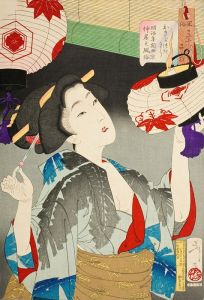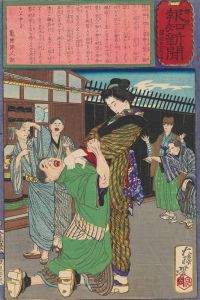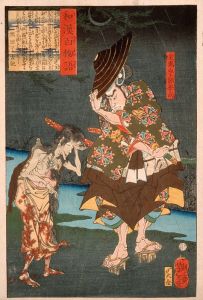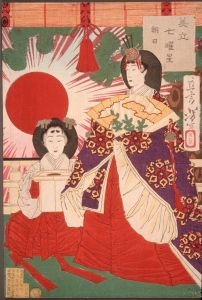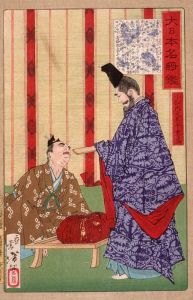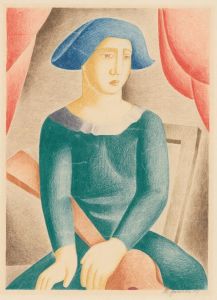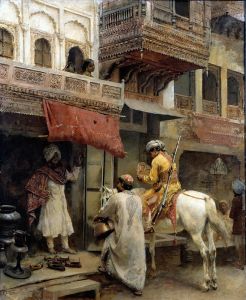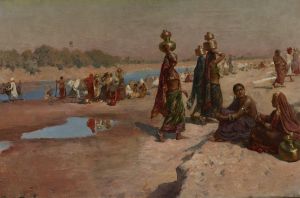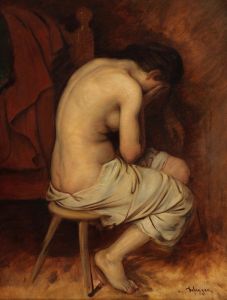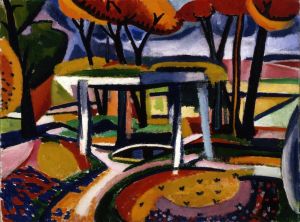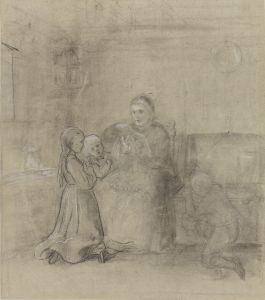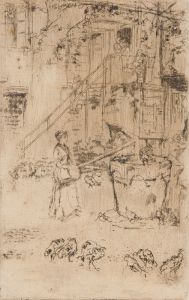
Lady Kayō, Consort of Prince Hanzoku of India, Holding a Severed Head
A hand-painted replica of Tsukioka Yoshitoshi’s masterpiece Lady Kayō, Consort of Prince Hanzoku of India, Holding a Severed Head, meticulously crafted by professional artists to capture the true essence of the original. Each piece is created with museum-quality canvas and rare mineral pigments, carefully painted by experienced artists with delicate brushstrokes and rich, layered colors to perfectly recreate the texture of the original artwork. Unlike machine-printed reproductions, this hand-painted version brings the painting to life, infused with the artist’s emotions and skill in every stroke. Whether for personal collection or home decoration, it instantly elevates the artistic atmosphere of any space.
Tsukioka Yoshitoshi (1839–1892) was a prominent Japanese ukiyo-e artist known for his innovative and dramatic woodblock prints. One of his works, Lady Kayō, Consort of Prince Hanzoku of India, Holding a Severed Head, is part of his celebrated series One Hundred Aspects of the Moon (Tsuki Hyakushi), which was published between 1885 and 1892. This series is widely regarded as one of Yoshitoshi's masterpieces, showcasing his artistic maturity and his ability to blend traditional Japanese aesthetics with modern influences.
The print depicts Lady Kayō, a figure from Indian legend, holding a severed head. The scene is both striking and enigmatic, reflecting Yoshitoshi's fascination with themes of beauty, violence, and the supernatural. The image is rendered with intricate detail and dramatic composition, characteristic of Yoshitoshi's later works. The moon, a recurring motif in the series, is subtly incorporated into the background, adding a sense of mystery and emotional depth to the scene.
While the exact historical or mythological origins of Lady Kayō and Prince Hanzoku are unclear, the story is believed to have been inspired by Buddhist or Indian folklore, which often features themes of karmic retribution and moral lessons. Yoshitoshi frequently drew upon such sources, blending them with Japanese cultural elements to create visually compelling and thought-provoking works.
This print exemplifies Yoshitoshi's ability to convey complex emotions and narratives through his art. The juxtaposition of Lady Kayō's serene expression with the gruesome imagery of the severed head creates a powerful tension, inviting viewers to reflect on the underlying story and its moral implications. The use of bold lines, vibrant colors, and delicate shading further enhances the visual impact of the piece.
Lady Kayō, Consort of Prince Hanzoku of India, Holding a Severed Head is a testament to Yoshitoshi's skill as a storyteller and his enduring influence on the ukiyo-e tradition. Today, the print is highly regarded by art historians and collectors, serving as a significant example of late 19th-century Japanese woodblock printing and its intersection with global artistic and cultural themes.







